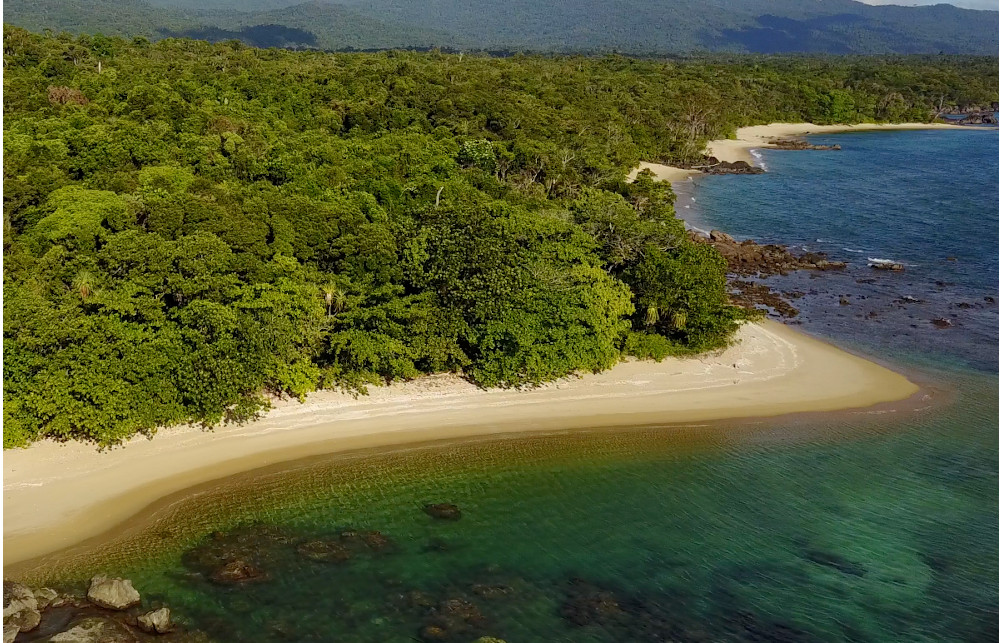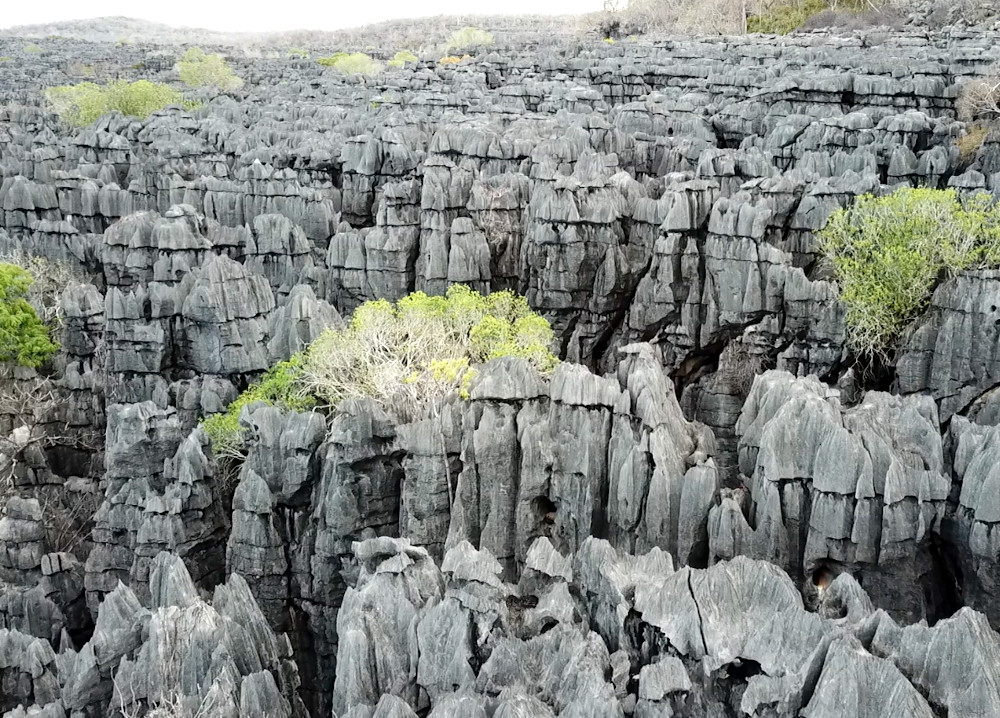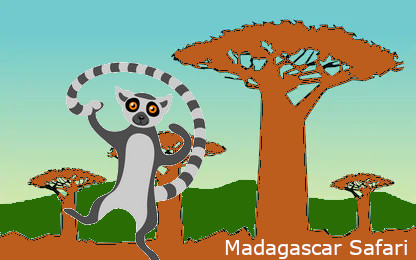- INTRODUCTION
- MALAGASY CULTURE
- MALAGASY TRADITIONAL SPORT
- MALAGASY CUISINE
- BEACHES AND RIVERS
- MONEY AND CREDIT CARDS
- PURCHASE TIPS
- SITES AND ACTIVITIES
- MONUMENTS
- MALASY HANDICRAFTS
- TIPS FOR TRAVELLERS
- MADAGASCAR CONNECTING FLIGHTS
- MADAGASCAR NATIONAL PARKS AND RESERVES
- FAUNA AND FLORA OF MADAGASCAR
- PUBLIC HOLIDAYS IN MADAGASCAR
- THE SOUTH WEST AND WESTERN REGIONS
- THE SOUTH EAST REGION
- THE NORTH WEST REGION
- THE NORTH EAST AND EAST REGIONS
- THE CENTRAL HIGHLANDS
MADAGASCAR NATIONAL PARKS AND RESERVES
Masoala National Park

About thirty kilometers from Maroantsetra in the Bay of Antongil, the Masoala National park stretches to the ocean over 230 000 ha of primary forest to reach the altitude of 1311 m. Among the 10 species of lemurs which have been inventoried there, the elusive ginger Vari with its flaming coat is particularly worth noting. The rich fauna of Masoala numbers rare or unique species such as the green lizard, the red owl, the tomato frog, or the serpent eater eagle. Its three marine spots (Tampolo in the west, Ambodilaitry in the south ant Ifaho in the east) are privileged spots for kayaking or ski diving while holding one’s breath. A simple mask is enough to admire a colourful marine world. The Bay of antongil is a spot favourable for observing the whale sharks migrating from Antarctica during the spawning period from july to september. A replica in a glasshouse with genuine plants and animals from Masoala is now one of the main attractions of the zoo of Zurich. … Where the forest meets with the sea, a real hymn to nature! You will have unforgettable memories of hiking along the trails from the west to the east, from Maroantsetra to the cape east, from Antalaha to Maroantsetra or along the peninsula passing by Ambanizana, Lohotrozona, Tampolo or Antalaviana. Travelling by canoe or boat is practically unavoidable. Trails and camping infrastructures have been laid out in the special reserve of Nosy Mangabe, Ambatoledama, at cape east and at the 3 marine parks. Madagascar’s wildlife is quite particular in this area.
Baly reserve
150 km in the south-west of Mahajanga, the Bay of Baly is still known by few number of tourists but this will soon change! Spots of such riches and diversity are rare in thick dry forests, with its disorderly bush vegetation, the green mangroves along the shore. Not to forget the remote beaches, the magnificent lakes, and above all the coral reefs offering their marine life to passionate divers. Here is the range for spur tortoises which are the rarest of Madagascar species, for endemic birds such as the eagle fisher, the sacred ibis or Hubert’s heron. The bay which is somehow the “soul” of the park is also a favourite place for pink flamingos and dolphins.
“Realm of birds, land of sacred lakes, fount of life”, Ankarafantsika is in the north-west of Madagascar, 450 km from Antananarivo and 115 km from Mahajanga along the rN4. It is said that in the old days, a brigand used to terrorize the people in the region. A lake, reputed for its crocodiles in the park, was named after him Ravelobe. The vegetation is there characterized by a mixture of deciduous dry forests, humid forests, marshes with raffia and savannas, as well as several aquatic habitats. 92.3% of tree species and 84.4% of herbaceous species are endemic. 129 bird species are numbered, some of which like the Van Dam’s Vanga or the white Mésite attract ornithologists from all over the world. 3 endemic species of tortoises are bred in the nearby forest station of Ampijoroa: the “ploughshare” tortoise, Angonoka, the flat tail tortoise, Kapidolo, and the fresh water tortoise, Rere. The park constantly receives the visit of research institutions. It is the team from the university of Hanover, Germany, that discovered the Microcebus Ravelobensis in 1997.
Andasibe Mantadia National Park
About 138 km in the east of Antananarivo along rN2, Andasibe National park is the most visited of the protected areas. It actually comprises two parts: the Mantadia Park and the Analamazaotra reserve of indri, over 12 180 ha surface area. It is a real treasure in terms of fauna, as Andasibe hosts 11 species of lemurs of which the biggest, the indri indri, that is easily spotted because of its impressive shrieks. It cannot bear being in captivity, so it can be admired only in its natural milieu. The park also shelters several species of birds, reptiles, insects and amphibians. As for its flora, it is the luxuriant vegetation of tropical forests with several varieties of ferns, epiphyts, sacred creepers, orchids and dwarf palm trees. The park has an interpretation centre as well as places laid out for picnic or camping.It is the most visited hotspot for ecotourism and groups the special reserve of Analamazaotra (810 ha) and the Mantadia National park (12 000 ha). Indri tour: Indri I: 1 to 2 hours’ walk – group of indri – fascinating forest scenery- group of Fulvus (brown lemur) – Avahi laniger laniger (nocturnal lemur in camou lage) – reptiles (nasitus, brevicorns, green lizard…)
Indri II: 3 to 4 hours’ walk – observation of two groups of indri-fascinating forest scenery – Eulemur rubriventer – Avahi laniger – Hapalemur griseus griseus (bamboo lemur) Adventure tour: 4 to 6 hours’ walk – group of indri – group of Hapalemur – Avahi laniger laniger- varied forest landscapes – different orchid species. Botanical tour: leads to the orchids’ park. Tree species with their names on tags to make identiication easy- Orchids in blossom in October-November. Sacred Falls and Rianasoa tour: marked out and secured route across lush vegetation.Tsakoka tour: at the far edge of the park public area.
Tsingy de Bemaraha National Park

Classified as World Heritage by UNESCO in 1990, Bemaraha which occupies part of the limestone plateau, bearing the same name, became a national park in 1997. The scenery offered by its tsingy is one of the most spectacular in Madagascar with its faults, cracks sculpted into sharp peaks and ridges. Millions of years ago, these mountains were engulfed in the sea. Corals and shells piled up and knit together to form a 200 m thick an immense plate. Waters withdrew progressively, and the limestone left in the open cracked to form joints and canyons. Then, rain started its long eroding work on the surface and deep beneath. On the “roof” of the Tsingy, temperature may be as high as 50° whereas from the depths of the canyons, vegetation is striving to grow upward for sunlight and vital photosynthesis. Some call them forests, others limestone cathedrals. The park offers a range of tours with various levels of difficulties, all requiring a guide. Tantely tour: test-tour (dizziness, ease…) before tackling more demanding routes. Andadoany and Ankeligoa tours: respectively 2 and 6 km, to be done in 4 to 5 h. Labyrinths, “cathedrals”, overview of the Tsingy. Manambolo tour: usually in 4 h of which 1h by pirogue and 3h on foot. Over 100 m high steep gorges. Anjohimahitsy tour: rather hard, to be done in 1 or 2 days, as one wishes. Includes the previous tours. Andamozavaky tour: 5 km in 6 h; classified as hard. 360° panoramic view, feeling of emptiness on a suspension bridge. Berano tour: 3km at the northern entrance, focussed on speleology. One may add the Tours of biological and ecological interest (SIBE) outside the park. Tourism in villages, warm and traditional hospitality.
Ranomafana National Park
Accessible from Ambohimahasoa along rN7 and over a 41 600 ha surface area, the Ranomafana National Park is one of the richest for discovering biodiversity in the eastern humid forest. It is nestled in a mountainous and extremely rainy region, which accounts for its nickname the “misty land”. Second thermal spot of the island, its scenery alternates green cliffs and streams punctuated by cascades. It hosts 12 species of lemurs like the black crowned sifaka, the Hapalemur Aureus, the Hapalemur Simus, or the Microcebus Rufus, the tiniest of lemurs which may be seen at the spot of Talatakely in the evening. Thanks to researchers and their work, their range is perfectly known. Ranomafana also hosts 114 Madagascar’s bird species, to be watched and listened to especially in september-October. Here, the chameleons are the most colourful and the most attractive. Trees comprise several precious species and others used for medicinal purposes. In the undergrowth, pandanus, ferns, orchids, creepers and strangler fig trees highlight the tropical feature of the forest. Routes have been designed to focus on the observation of a particularly rich fauna and flora with possibilities to make visits at night, or to go at the discovery of cultural and historical sites.
Varibolo tour:
– Edena complex, 2 to 4h for all visitors
– Varibolomena complex: 3 to 5h for young and sportive people
Varijatsy tour:
– Vatoharana complex, 6h for a day return, one day or more with camping
(June through November).
– Vohibate complex, adventure trip, 2h for young and sportive people
(June through November).
Sahamalaotra tour: 2h on foot, for all
Vohiparara tour:
– Kidonavo complex, 3 to 5h
– Andranofady complex, 4 to 8h
– Andranonaito complex, 2 to 3h on foot from Vohiparara.
Soarano tour:
– Ranomena complex, 1 to 2 days’ trip for young and
sportive people.
– Vohimeva complex, 2h trip for discovery by night.
Note: Soarano and Varijatsy tours are particularly
favourable for trekking/hiking. They are adven-
ture tours which can be adjusted according to
the hiker’s needs.
97 km in the south of Fianarantsoa, the park is perched on the Massif of Andringitra at an altitude ranging from 650 to 2658 m. The Andringitra is one of the biological hotspots of Madagascar, a natural laboratory where relic and more recent species cohabit, which accounts for the originality of its fauna and lora. It is in the Andringitra that there is the greatest concentration of known lemur species, with no less than 9 of them on the eastern side, and 5 on the western side. 5 species of carnivore, of which the fosa with its miniature puma-like shape, in shelter there, as well as 99 inventoried bird species, and the list is not complete. On the western side of the park, the Tsaranoro cliff is a worldwide recognized climbing spot. Geography does not exclude humour: peak Boby, second summit of Madagascar culminating at 2658 m and first accessible, it has been named after the dog called Boby could reach it after the first expedition.
The park comprises rocky mountains of granite and gneiss, with a number of summits culminating at over 2500 m, and in between stretch mountain prairies.
Asaramanitra tour: 6 km loop, 4h walk, not really easy of access.
Sacred cascade, cave.
Diavolana tour: 13 km loop, 10h walk, sudden changes of weather.
Opens into a lunar landscape.
Imaitso tour: 14 km loop, 8h walk, wet and cool weather. Rare lemurs and birds.
Isahavato tour: 15 km, 12h walk, hot weather. Rare palm trees, natural
swimming-pool.
Imarivolanitra tour: 28 km, leads to the summit of Peak Boby up very
steep slopes.
Set up as a national park in 1962 and the main natural curiosity on the road to the south, stretching over 81 000 ha, the Isalo Natural park is chronologically the second one in Madagascar. Here, erosion has carved fantastic figures in the sandstone, from sharp needles standing up to the sky to rocky blocs apparently unstable on their base. Human’s imagination has created several images out of the landscape, a lion watching over his territory, a boot, a crocodile on the brink of jumping on its prey, and above all a queen with no less than a crown and a coat. Apparently dry, Isalo is a country endowed with an important network of streams feeding the tributaries of the river Mangoky. It is a sacred land, as it also shelters the Bara ancestors’ cemeteries, dug on the cliff sides to prevent pillage. The best way of understanding the Isalo is to start with a visit to the Maison de l’Isalo, an interpretation centre located 9 km from the village of Ranohira. The Isalo features a succession of canyons, from red to pink colourful sandstone peaks, carved granite masses… At other places, the plateau is dug by craters, and silence is the king.
The natural swimming-pool: Easy tour, very much enjoyed by hikers. Oasis with a cascade, cool and fresh. Namaza:
From the deep gorges to the Blue Swimming-Pool or the Black Swimming-Pool. Climbing up cascades with the company of colonies of rare birds.
Canyons of Rats and Makis: Very sportive tour to the kingdom of the last king Barabe Ramieba. Deep and straight gorges, discovery of a lush vegetation, watching groups of lemurs. The cave of the Portuguese and Sahanafa: Crossing the rivers, steep slopes. For good hikers, in good shape, not pressed by time. Malaso : Easy, with laid out trails and tracks; covers the whole southern part of the park, a botanical garden, wind sculpted strange figures. A tour operator proposes the tour by horse.
Located 275 km from Tulear and stretching over 43 000 ha, the Tsimanampesotse National park was classified as a “Ramsar site” in 1998. The lake whose water changes colour, from turquoise blue to topaze green, is an oasis in a region reputed to be the driest in Madagascar. Vegetation takes weird shapes as a result of its permanent fight against drought, creating an environment that looks unreal to the visitor. Birds are the main attractions of the park, namely with the great gathering of pink flamingos, dwarf flamingos and grebes in the dry season. One can easily encounter several lemurs species, of which the famous lemur catta. One can also go out at night at the discovery of Galidietis Grandidieri, a small carnivore specific to this park. But the name Tsimanampesotse is above all to be linked with the blind fish Typhleotis, which lives in its caves. This national park has been opened to tourism in 2001. Four routes have been laid out by PNm-aNgaP to highlight the value and riches of a site of exceptional beauty, whose name means “the lake without dolphins”. Andaka tour: particularly oriented to ornithology. Tsimaso tour: focused on caves and swallow holes sheltering the blindish Typhleotis Madagascariensis. Andalamaike tour: shows various ways of vegetation adjustment to harsh weather and soil conditions. Emande tour: special for watching lemurs and enjoying the scenery surrounding the lake.
Andohahela National Park
Andohahela, in the region of Taolagnaro, is a key national park. Its specificity lies in the extraordinary variety of its ecosystems thanks to the proximity of the mountainous chain of Anosy. The eastern tropical and humid forest changes into a dry forest to the West and south between an intermediate area with little rainfall but with the benefit of several rivers from the mountains. More than 90% of the plants from Andohahela are used in traditional medicine, like the Jabihy which is used for the quick recovery of young mothers as well as for embalming corpses! The triangular palm tree Dypsis Decaryi exists only in this part of the world. The types of iguanas found here are only encountered in America, which, if need be, is a proof of the continental drift, and the park shelters 13 species of lemurs, of which the “sifaka”, well-known for its jumps. Lastly, geology of the southern tip of Anosy has very specific features, especially due to its metamorphic rocks and the magic effect of their colours and shapes carved by erosion.
Zombitse Vohibasia National Park
This dry and deciduous forest, where epiphyt plants and baobab trees can be found, is located at 15 km from sakaraha, between
